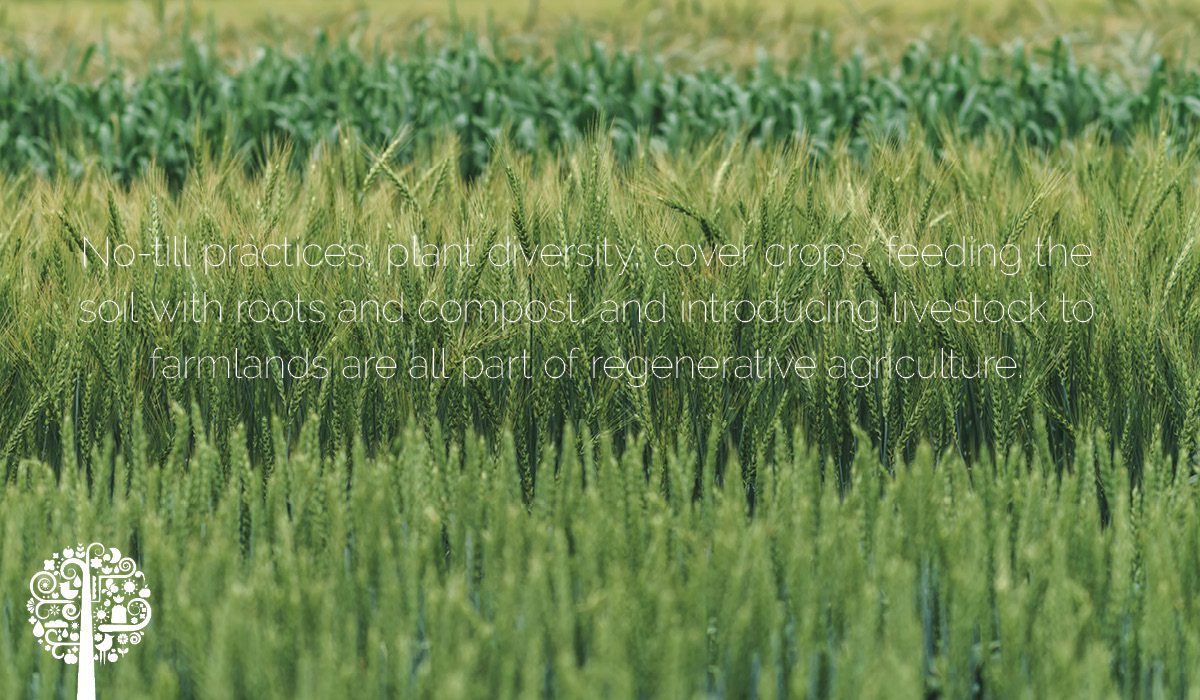The world’s farming industry and food system are no longer fit for purpose. Farming is directly responsible for nearly 30% of all greenhouse emissions, and industrial agriculture is eroding soil at a rate of 24 billion tonnes a year. Modern agricultural practices are also contributing to wildlife and insect extinction. Around 40% of global insect species are in decline, and one-third are endangered.
Conventional farming is designed for mass production. High demand for specific crops means the soil is continuously being fertilized and tilled. As a result, the earth is stripped of the possibility of any green growth; it has no time to recover and is left unprotected against the weather. Current agricultural practices also do not address pressing issues such as climate change, food poverty, and the growing global population, estimated to reach 10.9 billion by 2100.
Soil Rejuvenation
To correct our mistakes and create a sustainable new farming model for future generations, we have to start building health and resilience back into the soil. Soil health is paramount for large-scale farming, especially the topsoil, where 95% of all produce is grown. Soil is a live organism containing good bacteria, bugs, fungus, and other living things that can break down organic matter and recycle it back to the plants as nutrients. In ideal conditions, one billion bacteria can live in just one teaspoon of rich soil!

Soil and its organic makeup store and feed off of carbon. However, when the soil is tilled, it releases its carbon stores into the atmosphere, breaking down the soil’s microbiome. Farmland that is overworked or poorly managed will see more carbon and pollutants like pesticides and fertilizers leach into the air and weather supply. Estimates suggest that 50-70% of the carbon stored in soil worldwide has already been released into the atmosphere via industrial agriculture.
Working With Nature
Regenerative agriculture has the potential to redesign the farming industry so that it can work in sync with nature, reducing the carbon footprint and strengthening the food supply chain. No-till practices, plant diversity, cover crops, feeding the soil with roots and compost, and introducing livestock to farmlands are all part of regenerative agriculture. Beyond transforming how we grow food, this farming method can draw carbon out of the atmosphere, replenishing the soil. Just a 2% increase in soil carbon levels could be enough to offset all greenhouse gas emissions. Perhaps the answer to climate change has been under our feet all along.
Carbon Sinks
We know regenerative growing helps revitalize the soil. But it also uses farmland as a carbon sink to slow down climate change. A carbon sink is a natural environment with the ability to absorb carbon dioxide from the atmosphere. On a global scale, the organic matter in soil contains almost four times as much carbon as you would find in either the vegetation that grows out of it or the atmosphere itself.

The benefits of building stores of carbon into the soil are many, from cutting CO2 levels in the atmosphere to boosting food security, preventing biodiversity loss and creating more effective defenses against adverse weather conditions.
A Farming Revolution
However, the theory on its own is not enough. We must put regenerative agriculture into practice on a mass scale. We need a complete farming revolution where the big corporations can help all farmers adopt new practices.
Many farmers would like to switch to regenerative techniques to safeguard their livelihood and soil. This is especially true of the more impoverished farmers in the global south, where the current agriculture system provides them with the most problems. So how do we make regenerative agriculture a reality for all?
A first-of-its-kind project underway in France and Belgium could be the answer. The project aims to transform agricultural practices and restore soil health in farms across the two countries with the largest share of the EU’s agricultural land.
The project’s premise is to work with farmers to analyze what actions will most improve their profitability and greenhouse gas emissions. As the farms change over to using regenerative techniques, their farmland transforms from a net emitter of greenhouse gases to a carbon sink. The reduction in emissions is then measured, and the farmers can benefit from climate finance.
This system allows farmers to work towards various targets for reducing their emissions and rewards them for their efforts with financing from registered climate action projects. The money assists with the cost of further initiatives designed to mitigate climate change effects.
A complete overhaul of the agriculture system may be a long way off. However, any steps forward in making it easier for farmers, especially those in developing countries, to implement climate-smart farming is positive. Empowering the farming community with regenerative agriculture practices will hopefully go a long way in solving the climate crisis, the loss of soil biodiversity, and the challenges of meeting global food supply demands for generations to come. Even the slightest change now could bring tremendous benefits further down the line.